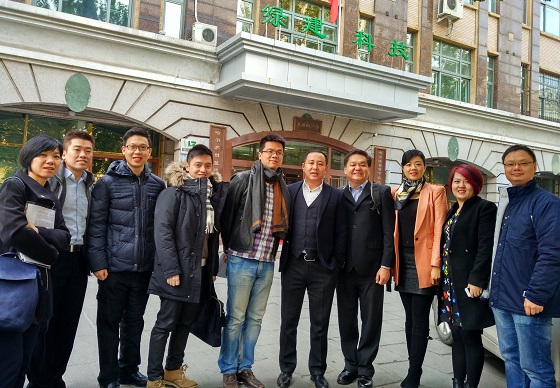 Singapore delegation with Green Build Technology management at one of the Group's two HQ buildings in Harbin, Heilongjiang, PRC. L-R: Elle Shi, Phillip Capital Portfolio Manager | Benny Tan, The Edge Senior Writer | Lai Gene Lih, Maybank Kim Eng Investment Analyst | Peter Ng, Phillip Securities Investment Analyst | Roy Chen, CIMB Securities Investment Analyst | Zhao Li Zhi, Green Build Non-executive Chairman | El Lee, Financial PR Associate Director | Wu Xue Ying, Green Build CEO | Wang Hong, Green Build Vice President | Kevin Li, Green Build Financial Controller. (Shares Investment reporter Tan Jia Hui was present but not pictured)
Singapore delegation with Green Build Technology management at one of the Group's two HQ buildings in Harbin, Heilongjiang, PRC. L-R: Elle Shi, Phillip Capital Portfolio Manager | Benny Tan, The Edge Senior Writer | Lai Gene Lih, Maybank Kim Eng Investment Analyst | Peter Ng, Phillip Securities Investment Analyst | Roy Chen, CIMB Securities Investment Analyst | Zhao Li Zhi, Green Build Non-executive Chairman | El Lee, Financial PR Associate Director | Wu Xue Ying, Green Build CEO | Wang Hong, Green Build Vice President | Kevin Li, Green Build Financial Controller. (Shares Investment reporter Tan Jia Hui was present but not pictured)
Photos and video by Sim Kih
GREEN BUILD TECHNOLOGY'S building insulation projects are bustling with activity. This was what NextInsight found at a recent visit with a group of 3 analysts, a fund manager and 2 other reporters to inspect the project consultancy's construction sites in Harbin, Heilongjiang, PRC. Here is a summary of the takeaways from the trip.
Income Surge from Expansion of Green Tech Business
Upgrade of building insulation
1) The Group recognized government grants and related related income amounting to Rmb 26,453,000 for work on 160,000 sqm of built-up area at Hebai in FY2014. This year, the management plans to complete 780,000 sqm, almost 5 times of last year's built-up area. Based on the same grant rate, related income from grants are estimated at Rmb 128.7 million for FY2015.
Underground utility tunnel project
2) The tender for this project was secured in October. The Group expects to receive government grants of about Rmb 884 million for its construction.
Work in progress to add thermal facade cladding.
After the green technology business was injected into food packaging company Youyue International last year, the Group was renamed Green Build Technology. Its packaging business that contributed Rmb 113 million to 1HFY2015 revenue will be hived off. This leaves Green Build with the following business segments.
(1) Building insulation upgrade - Adding thermal facade cladding and installation of heating systems with solar power and natural gas elements.
(2) Underground utility tunnel.
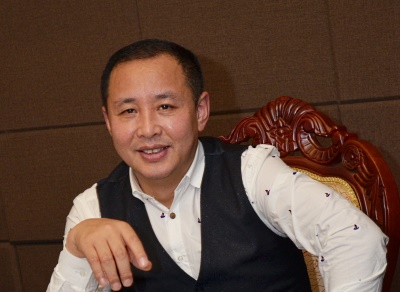 On 26 October, its Non-executive Chairman, Zhao Li Zhi (above), reduced his interest by 25.12% (60 million shares) for S$18 million, or 30 cents apiece. Post-placement, the Chairman remains the Group’s largest shareholder with a 40.83% interest.
On 26 October, its Non-executive Chairman, Zhao Li Zhi (above), reduced his interest by 25.12% (60 million shares) for S$18 million, or 30 cents apiece. Post-placement, the Chairman remains the Group’s largest shareholder with a 40.83% interest.
A 18.84% interest was placed to PRC business associate, Li Ming Yang, making him the second largest shareholder. Mr Li is a strategic partner who played a key role in helping the Group secure the underground utility tunnel project.
Building Insulation - High barrier to entry
There are three main reasons for the high demand for upgrading of old residential buildings in Northeastern China.
Firstly, the residents of old buildings with inadequate climate protection desire an improvement in lifestyle. Secondly, the market value of a building goes up once the insulation cladding is added and its heating system made environmental friendly and energy efficient. Thirdly, the building upgrade extends its life span by 20 years.
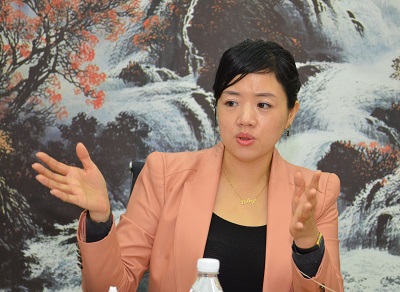 CEO Wu Xue Ying believes that enterprises that set industry standards are superior to companies with a strong brand presence.
CEO Wu Xue Ying believes that enterprises that set industry standards are superior to companies with a strong brand presence.
As the government has stopped issuing licenses for energy saving refurbishment construction companies, the barrier to entry will be very high for other companies, because they will not be entitled to tax exemption benefits and this significantly affects profitability.
Without the tax benefits, it is not worthwhile for construction players to accept such projects because the margin is too thin. A second deterrent is the long receivables cycle: the government subsidy is disbursed over 10 years. The tax benefit is as follows: first 3 years tax-free, years 4 to 6 @ 50% tax rebate, years 7 to 10 fully taxable, applicable at project level.
Underground Utility Tunnel - area oligopoly
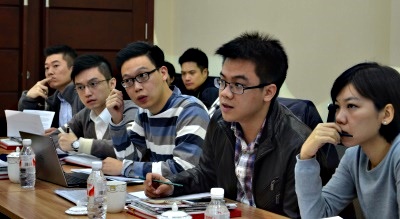 The management gave a corporation presentation at its headquarters, followed by a Q&A session with the visitors.Securing the underground utility tunnel project this month was a milestone event that is expected to add multiple streams of income.
The management gave a corporation presentation at its headquarters, followed by a Q&A session with the visitors.Securing the underground utility tunnel project this month was a milestone event that is expected to add multiple streams of income.
Other than government grants for construction work, entrance fees from telecommunications companies, water utilities companies, electric companies and other players who need to run pipes and cables through the the underground utility tunnel will add to the income stream. The rate payable by 3rd party service providers has yet to be determined, but a ballpark measure could be the Rmb 39 million entrance fee included in the Rmb 510 million government subsidy.
Green Build competed with 21 tenderers for the project, of which 18 were state-owned enterprises. The award criteria was not based on lowest-priced tender. Other than pricing, consideration was given to track record and project manager reputation at corporate and team member level.
It certainly helped that Mr Zhao is a reputable expert in energy efficiency for construction of buildings, with infrastructure insulation patents to his name. He has about 2 decades of experience in the construction and civil engineering industry.
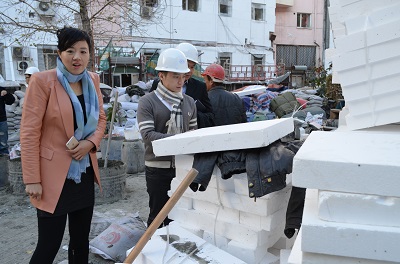 At a residential precinct undergoing upgrading works, the CEO (left) shows Phillip Securities analyst, Peter Ng, the A-grade fire-retardant polystyrene panels that the Group uses to insulate old buildings.
At a residential precinct undergoing upgrading works, the CEO (left) shows Phillip Securities analyst, Peter Ng, the A-grade fire-retardant polystyrene panels that the Group uses to insulate old buildings.
April to October Seasonality
The climate in Harbin is so cold that temperatures are sub-zero 5 months out of 12. Construction work takes place only from late April to late October.
As revenue is recognized based on progress of completion, there is a seasonal lull during 1Q and 4Q due to winter months from November to March. This is one reason why there was no revenue contribution from the Group’s green technology business segment during 1HFY2015. The other reason was due to delays in obtaining government approvals for project commencement.
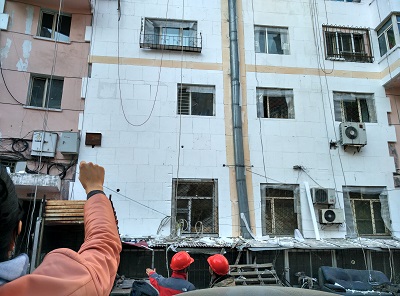 The polystyrene panels are plastered onto the building facade.
The polystyrene panels are plastered onto the building facade.
Project Management Specialist
The CEO is a management expert, having authored a management textbook used in many MBA courses, as well as being a prolific contributor at industry dialogues, such as the recent PRC infrastructure PPP summit.
As there is currently a supply glut of construction related services, the Group is able to use sub-contractors for all blue-collar manual work on profit sharing terms (60% to Green Build). There are two advantages in farming out work to sub-contractors: Firstly, work delivery is backed by a sub-contractor's deposit of about 10% of its sub-contracted project value. Secondly, the Group is relieved of excess payroll burden when there is no construction activity during winter.
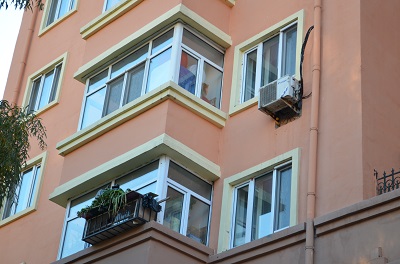 Facade insulation is complete after paintwork is added.
Facade insulation is complete after paintwork is added.
It has a full-time headcount of about 50 management, research and administration staff. This year, it deployed about 2,000 construction workers through sub-contractors and expects to deploy about 7,000 next year.
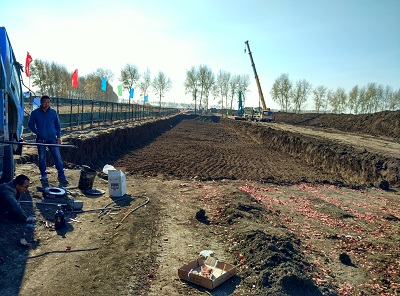 Excavation work has commenced at several sites to construct the 12km segment secured by the Group. The underground utility tunnel will have a depth of 7 to 8 meters and be 12 meters wide. Ability to Scale Up
Excavation work has commenced at several sites to construct the 12km segment secured by the Group. The underground utility tunnel will have a depth of 7 to 8 meters and be 12 meters wide. Ability to Scale Up
"Because we are using sub-contractors, it is very easy for us to scale up. It makes little difference whether we need to complete 1.2km, 12km or 120km within 180 days," said Mr Zhao.
He was explaining that the underground utility project can be completed on schedule even though most of the work can only be done from May to October next year.
Preliminary work has already commenced on the underground utility tunnel. The project was announced on 15 October. Work is expected to commence officially next June and is scheduled for completion by next December.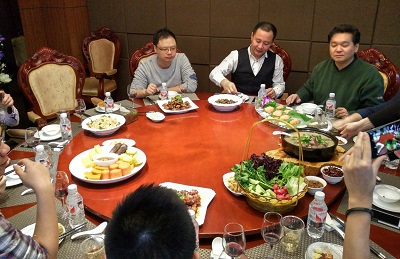 Welcome banquet hosted by Green Build management for the Singapore delegation.
Welcome banquet hosted by Green Build management for the Singapore delegation.







